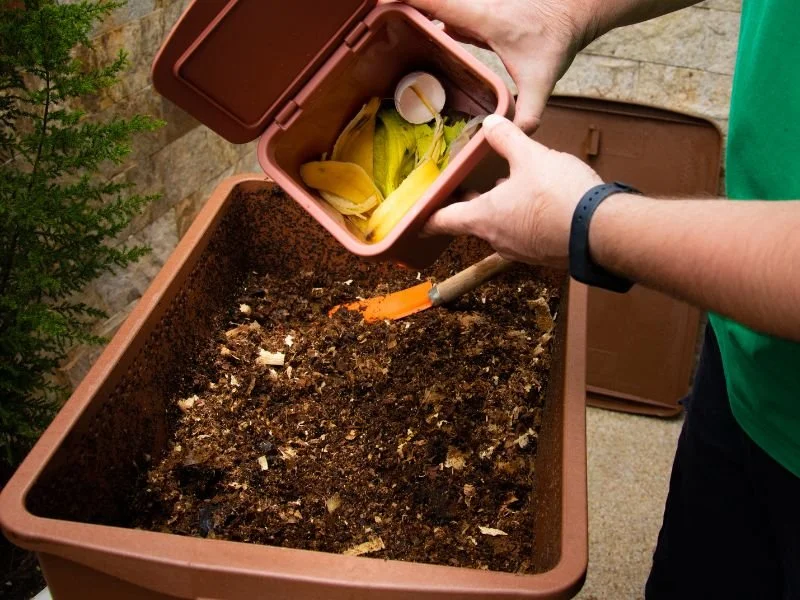Build Your Own Worm Bin
DIY a worm bin to prevent food waste in your household!
Think you don't have room for compost—small yard, apartment, or maybe you are a condo dweller? How about a worm bin? Come on, don't make that face! It's easy to make a worm bin. They don't smell bad, they're a great way to recycle food, and they're a lot of fun (kids love them). . . and you end up with a soil amendment/fertilizer for your plants (including potted plants in your house). You can buy commercial worm bins, but making your own is easy and inexpensive.
Materials Need -
Two 8-10 gallon plastic containers
A drill (with 1/4" and 1/16" bits) to make the drainage and air vent holes.
Newspaper or coconut fiber.
One pound of red worms (available from Solana Center’s Sustainability Shop or at your local nursery)
Step 1
Drill about 10 ventilation holes on each side of the containers, near the top edge, using the 1/16" bit.
Making the holes small will prevent fruit flies from entering the container.Step 2
Drill about 20 1/4" holes, evenly distributed, in the bottom of only one of the containers. These holes provide drainage; do not drill into the bottom of the other container.Step 3
Prepare the worm bed by tearing newspaper into 1-inch pieces or soaking coconut fiber for 30 minutes. (You can also add coffee grounds to the bedding.) Worms need a moist, humid bedding. Moisten the newspaper by soaking it in water and then wringing out the excess. Cover the bottom of the bin with 3 or 4 inches of moistened paper or coconut fiber. Place Bin 2 below Bin 1, without the lids.Step 4
Introduce your worms to Bin 1. One pound of red worms processes 3 to 4 pounds of food scraps per week (there are approximately 1,000 worms in a pound). If you start with less than a pound, don't worry—they multiply quickly. Add a handful of soil or finely ground eggs to the pile to provide the worms with food to grind and to aid their digestion. Place the lid on Bin 1.Step 5
Place the bin in a well-ventilated area such as the laundry room, garage, a balcony, under the sink, or outside in the shade. Use the hole-free bin to catch the liquid (leachate) that drains from the top bin. This liquid is an excellent fertilizer.Step 6
Feed the worms slowly at first. As they multiply, you can add more food. Bury the food in different sections of the bin each week. The worms will follow the food around the bin. Covering the material and food with a piece of mosquito netting, cardboard, or newspaper will keep fruit flies away.
